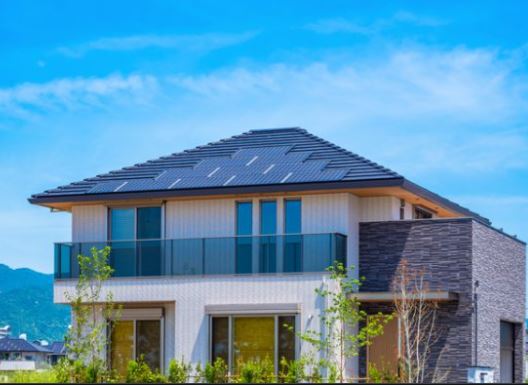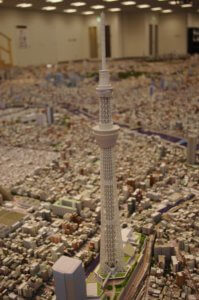Zero Emission House in Japan: Daiwa House, PanaHome, Misawa Homes
Zero Emission House in Japan: Daiwa House, PanaHome, Misawa Homes
By harnessing solar power generation and other forms of natural energy to their fullest, an inhabited dwelling can be made to emit no carbon dioxide (CO2), and possibly achieve even less than zero emissions. Misawa Homes has been engaged in development of this kind of eco-friendly dream home, and is readying the sales launch within this year.
The number of new housing starts in Japan, currently around 800,000 per year, has declined to about half from the peak. With Japan's declining birth rate, no growth can be foreseen in the future. But Misawa Homes hopes by differentiating itself as an eco-friendly company it can boost market share. Other home builders have also begun their own R&D, and zero-emissions homes may become the battlefield of the future.
Sadayuki Ishizuka, manager of the No. 1 design group of Misawa Homes Product Development Division tasked with development of a zero emissions home, shows pride in the remarkable environmental considerations his company has developed.
Last November, on a lot for housing prototypes in the City of Suginami in Tokyo, the company erected its "Eco Flagship Model," built to meet standards for homes with zero carbon dioxide emissions.

In addition to 9.52 kilowatts of electricity via solar power generation, the home is equipped with a battery that stores the power. To harness natural energy to its fullest, the building itself is shaped so that the solar panels are concentrated on the south façade, enabling maximum exposure to the sun. Another innovation is the introduction of Cascade System that collects the sun's rays for heat in the winter. The walls and windows adopt a type of glass with outstanding insulation properties; illumination is by LEDs, with low power consumption, along with Organic EL (Electro-Luminescence). The home is also equipped with an electric vehicle (EV) recharging station.
These high-efficiency facilities are linked to an IT network, and incorporate a system with a monitor that displays the house's electric power generation as well as electric, gas and water consumption, and CO2 emissions, thereby serving to raise the householder's awareness toward energy conservation.
By fully harnessing the latest environmental technologies, according to Misawa Homes, it becomes possible to reduce CO2 emissions to negative levels, so "Over a period of several decades, the house will be able to absorb the CO2 emitted during the time it was constructed." While such measures are expected to raise total construction costs by several million yen, generation of solar power and sales of the generated electricity would make it possible for the owner to recover the original outlays after a number of years.
This concept will make it possible to "build homes analogous to planting trees," through a concept that views a dwelling becoming part of the biosystem. In the future, when launching sales with results from housing prototypes in Suginami, the reduction in emissions by its housing divisions may contribute to a cut in CO2 emissions from housing which accounts for 15% of overall emissions.
Other builders have also been stepping up efforts to develop zero emissions homes. In July 2010, Daiwa House introduced a prototype, named "xevoYU," that generates 9.6 kilowatts of electricity and features exterior walls with insulation panels. In the case of four residents in the house, Daiwa claims CO2 emissions of less than zero. The company aims to sell 2,400 units this year.
During 2011, PanaHome Corporation and Sumitomo Forestry Co., Ltd. plan to put zero-emissions homes on sale. Last July, PanaHome completed test houses utilizing solar panels and heat-retaining materials at its plant in Shiga Prefecture. Sumitomo Forestry has been collecting data from test houses at its research center in Ibaraki Prefecture.
Behind the companies' efforts is the government’s objective of setting standards for zero-emissions houses by the year 2021. Taking the lead in creating high-performance eco dwellings will provide a boost to the corporate image and expand sales. Considering this, it is likely that competition to develop them from the standpoints of both performance and cost will further intensify.
The description and specification of Zero Emission house in Japan


